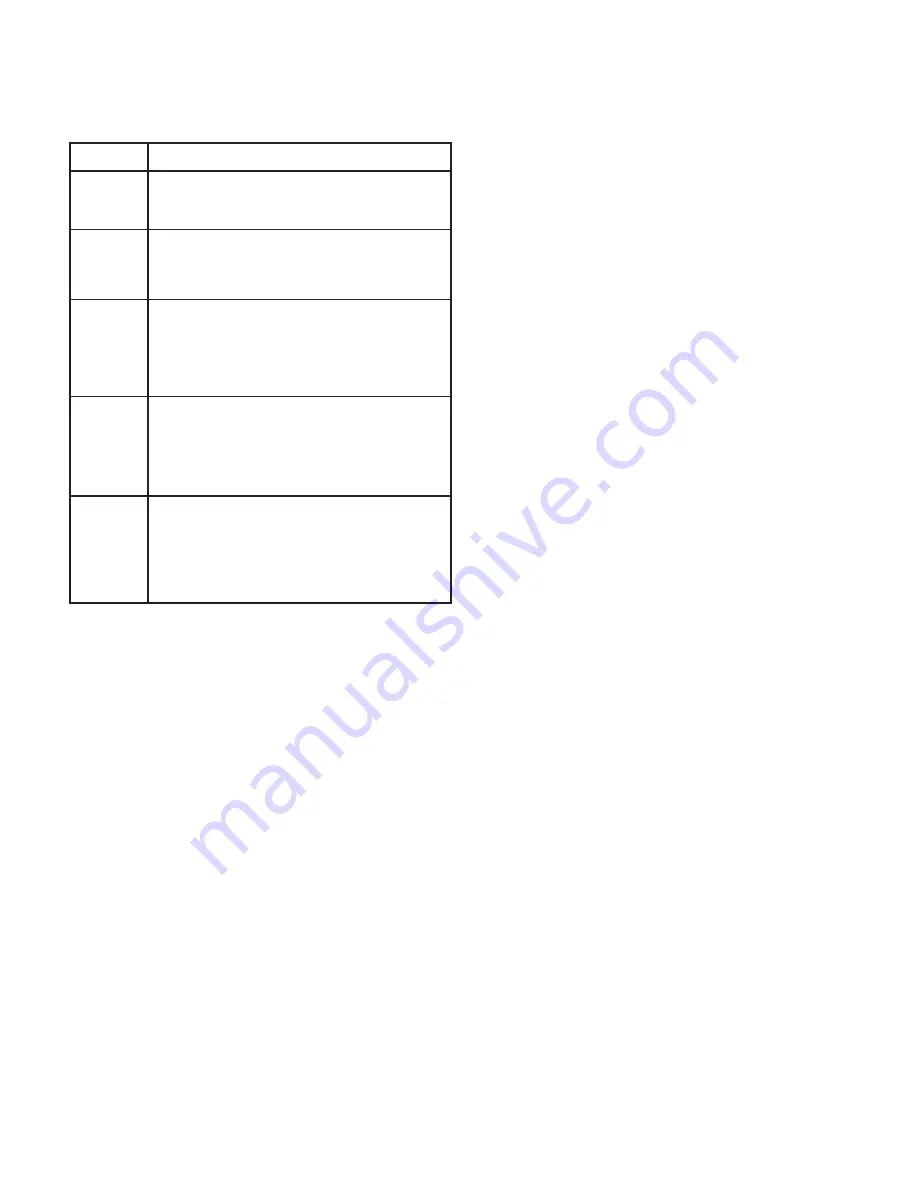
20
Troubleshooting Table
Daily Checklist, Cleaning
and Storage
Daily Checklist
To help maintain your cordless chain saw for optimum
performance, we recommend you complete this checklist prior
to each work session.
m
WARNING!
Do not insert the batteries until you have
completed all of the daily checks.
• Inspect for any visible damage to the chain, guide bar, or
motor housing.
• Inspect the oil port and guide bar rails and clean them to
remove any debris.
• Check the chain tension.
• Check the chain teeth for sharpness.
• Check the bar and chain oil level; fill with only new chain
oil specifically formulated for chain saws.
NOTE:
If you notice anything unusual, such as a vibration
or odd sound, shut the saw OFF immediately. Remove the
batteries and check the saw for any damage.
If you cannot find the cause of the problem or are uncertain
what to do, then have the saw inspected by an authorized
Snow Joe
®
+ Sun Joe
®
dealer or call the Snow Joe
®
+
Sun Joe
®
customer service center at 1-866-SNOWJOE
(1-866-766-9563) before using it.
m
CAUTION!
• Remove the batteries and wait at least five minutes for the
saw to cool before servicing or storing your unit.
•
If you drop the saw, carefully inspect it for damage. If the
guide bar is bent, the housing is cracked, the handle is
broken, or if you see any other condition that may affect
the saw’s operation,
DO NOT USE
the tool. Instead, have
it serviced at an authorized Snow Joe
®
+ Sun Joe
®
dealer or call the Snow Joe
®
+ Sun Joe
®
customer service
center at 1-866-SNOWJOE (1-866-766-9563).
Cleaning
Use only mild soap and a damp cloth to clean the cordless
chain saw. Never let any liquid get inside the motor housing
and
NEVER
immerse any part of the saw housing in liquid.
Storage
• Ensure that the guide bar cover is in place when storing.
• Do not store cordless chain saw near chemicals, such
as fertilizers or other harsh solvents. Do not expose
the plastic parts of the unit to brake fluids, gasoline,
petroleum-based products, penetrating oils, or the like.
These products are often highly corrosive and may cause
permanent damage, weaken, or destroy the plastic parts
of your unit.
•
When not in use, your machine should be stored
indoors in a dry and high or locked-up place, out of
the reach of children.
Battery C Disposal
Always dispose of your battery pack according to federal,
state, and local regulations. Contact a recycling agency in your
area for recycling locations.
m
CAUTION!
Even discharged battery packs contain
some energy. Before disposing, use electrical tape to cover
the terminals to prevent the battery pack from shorting, which
could cause a fire or explosion.
m
WARNING!
To reduce the risk of injury or explosion,
never burn or incinerate a battery pack even if it is damaged,
dead, or completely discharged. When burned, toxic fumes
and materials are emitted into the surrounding atmosphere.
1.
Batteries vary according to device. Consult your manual
for specific information.
2.
Install only new batteries of the same type in your product
(where applicable).
3.
Failure to insert batteries in the correct polarity, as
indicated in the battery compartment or manual, may
shorten the life of the batteries or cause batteries to leak.
4.
Do not mix old and new batteries.
Problems Corrective Action
The saw
motor fails
to start
•
Make sure that the batteries are inserted correctly
•
Check charge status and recharge the batter
ies
•
The chain is too tight; re-tension.
•
The chain tension is too tight; re-tension.
•
The chain oil tank is empty; refill.
•
The lubrication holes are plugged; clean them out.
•
The chain tension is too tight; re-tension.
•
The guide bar or chain is damaged; inspect
and replace the damaged part.
The saw
runs, but
the chain
speed is
low
Bar and
chain
running
hot and
smoking
The saw
motor
runs, but
the chain
is not
turning
The saw
stops during
operation
•
Make sure that the batteries are inserted correctly
•
Check charge status and recharge the batter
ies
•
The machine is overloaded









































